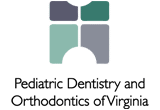 Many of our current and potential patients, and their parents, consider orthodontic treatment to be for cosmetic reasons. It’s true that braces can correct crooked or crowded teeth, or visible overbites or underbites.
Many of our current and potential patients, and their parents, consider orthodontic treatment to be for cosmetic reasons. It’s true that braces can correct crooked or crowded teeth, or visible overbites or underbites.
However, a straight smile goes far beyond just looks! Another big advantage of orthodontic treatment is lasting improved oral health for the patient. Because overlapping teeth can be hard to clean and floss, an uncorrected “bad bite” over the years can lead to tooth decay, gum disease, and even tooth loss.
If you have been considering orthodontic treatment for your child, but still have questions regarding how the procedure works, then this post is for you. Braces can successfully address all of the following orthodontic issues:
- Close gaps between the teeth
- Make sure the tips of the teeth are aligned
- Straighten crooked teeth
- Improve speech or eating (oral function)
- Improve the long-term health of gums and teeth
- Prevent long-term excessive wear or trauma of the teeth
- Treat an improper or “bad” bite (known as malocclusion)
There are quite a few benefits to gain by pursuing a healthy smile through orthodontics. Once his teeth are in their proper positions, your child will be better able to talk, eat, smile, and maintain good oral health. But how do orthodontics work?
Understanding the Basics
Standard braces have four basic components:
- brackets
- bands
- arch wires
- ligature elastics
The first step involves affixing the brackets directly to the tooth with a bonding material, such as glue. The shape and size of the tooth determines which sort of bond is used.
Next, thin arch wires are placed through the brackets, creating a system capable of exerting pressure on the teeth. Sometimes springs are placed on the arch wires in order to push, pull, or otherwise create pressure between teeth.
Once the wires have been run through the brackets, they are held in place with small circular elastics. The teeth move when external pressure is exerted on them through this system.
Braces Affect What Lies Beneath
When braces exert pressure on the teeth, it is not just the teeth that are affected. The teeth are able to maintain a changed position because of a process called bone remodeling.
As braces put gentle pressure on teeth, the periodontal membrane under the gums shifts as well, either stretching or contracting. Through this system, the teeth are slightly loosened. Once the teeth are in their proper position, the bone can then grow around the tooth in support of its new position. This procedure takes place many times through the orthodontic process until your child’s teeth have reached their target locations.
Additional Appliances
Sometimes a patient’s particular needs require additional appliances in order to ensure full success of orthodontic treatment. Additional appliances used in orthodontic treatment may include the following:
- Temporary Anchorage Devices (TADs): mini-screws used temporarily to apply extra pressure to teeth.
- Rubber Bands (also called Elastics): used to apply force to teeth.
- Headgear: a removable appliance attached to the back of the head to move either teeth or jaws. This device is commonly worn at night.
After Braces Come Off…
After braces are removed, the process is not complete. Teeth will often “try” to revert to their pre-treatment positions. To counteract that tendency, orthodontists typically fit their patients with retainers to be worn after braces are removed. Some retainers are removable, and others are fixed: all of them help to protect your investment and keep your child’s or young adult’s smile in top shape.
Although pursuing a healthier smile through orthodontic treatment for your child may seem daunting at the onset, the fact is that nothing could be simpler under the caring supervision of our well-trained pediatric orthodontic team. Your investment in time and effort will be well-worth it in the end.
If you have further questions about pediatric and adolescent orthodontic treatment or any of our other services, please do not hesitate to contact us at Pediatric Dentistry and Orthodontics of Virginia at (804) 739-0963. You also are welcome to schedule a complimentary orthodontic consultation online. We look forward to meeting and partnering with you and your child to achieve his or her healthy, gorgeous smile.
